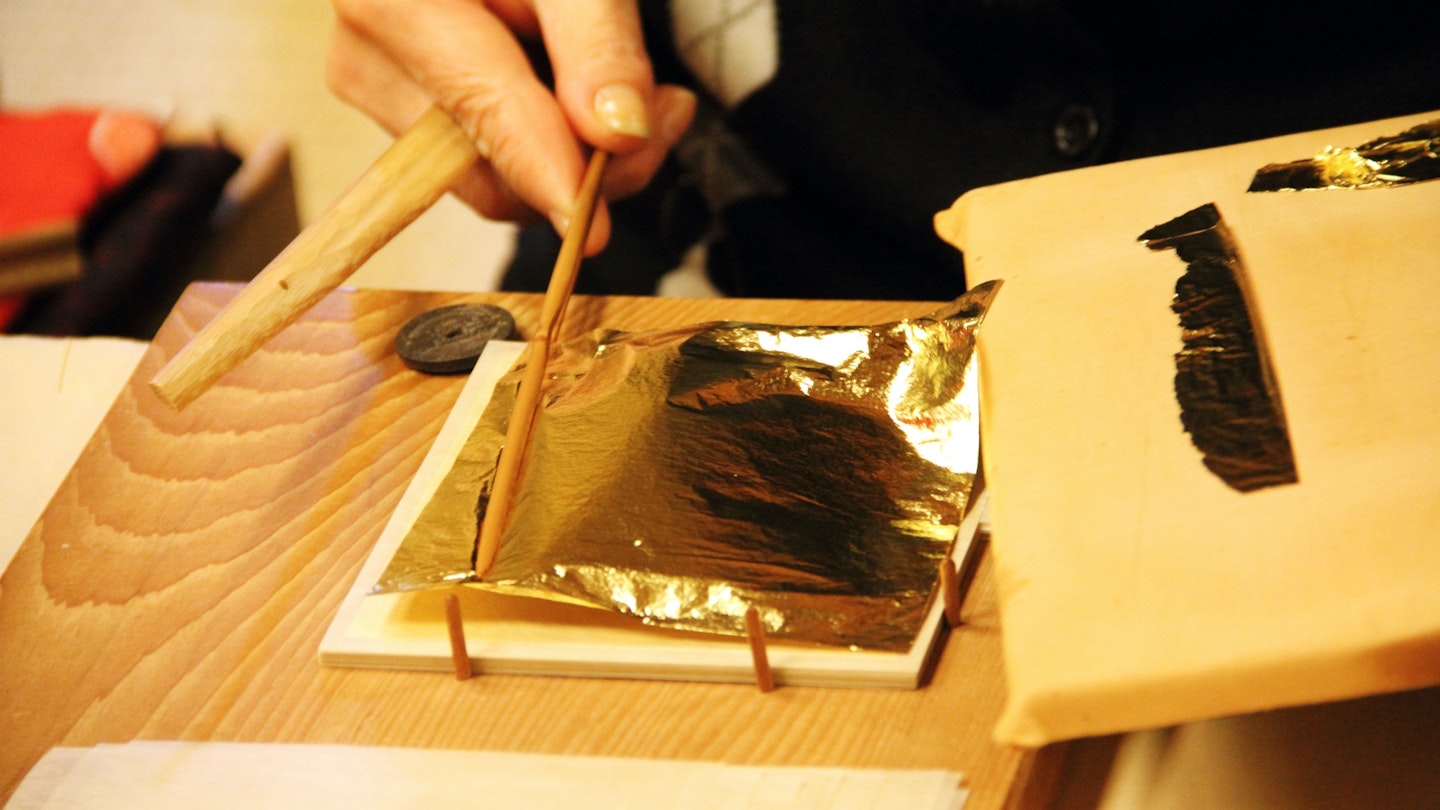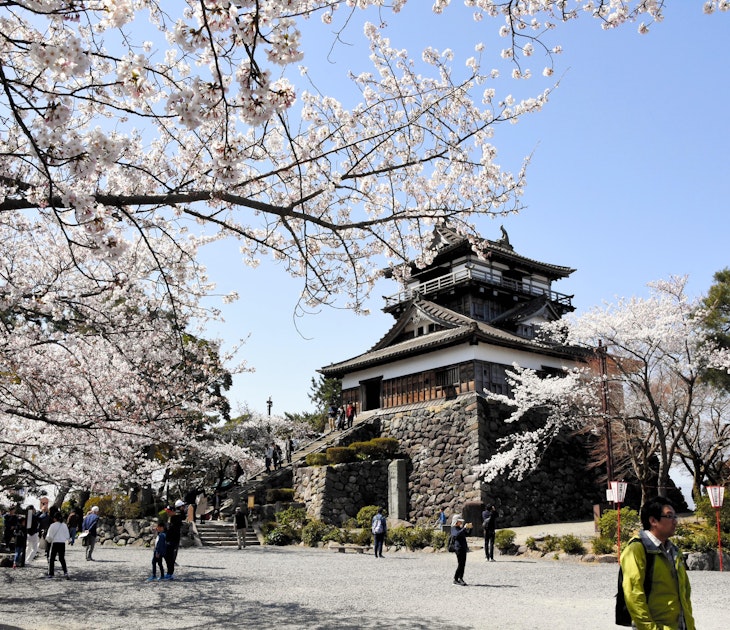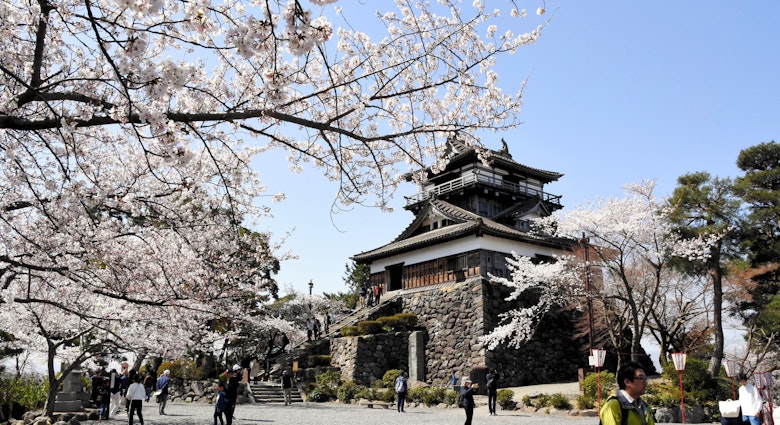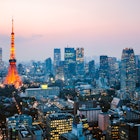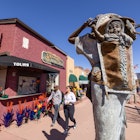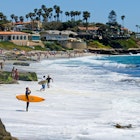Throughout history, Japan’s artistic sensibilities have been represented through a dizzying range of objects: katana (swords), folding screens, paper fans, urushi (lacquerware), pottery, copperware, woodware, temple iconography, and much more. Thanks to generations of dedicated and specialist artisans, many of these unique artistic pursuits still thrive.
The Hokuriku region of the Nihonkai (Sea of Japan) coast is a heartland of traditional Japanese crafts. And along the ‘New Golden Route’, which connects Tokyo, Kyoto and Osaka with the Hokuriku region via Shinkansen (bullet train), it's easier to access than ever before.
Starting off in Toyama, the route takes you along the Sea of Japan coast to Ishikawa and Fukui, where you’ll discover some of Japan’s most ancient and enduring traditions. Better yet, you can do it all in five days with our Hokuriku itinerary.
(To make the most of this train route, consider the all-access Hokuriku Arch Pass)
Riding Japan’s ‘New Golden Route’: The vibrant cities of Tokyo, Kyoto and Osaka

Toyama (Day 1)
Start the journey in Toyama Prefecture, around three hours from Tokyo Station via the Hokuriku Shinkansen. Inami, accessible from Shintakaoka Station by bus, is a small town at the foot of Toyama’s Mt. Yaotome and home to around 200 shokunin (artisans) primarily working in the wood-carving trade.
Amble along the main flagstone street, accompanied by the rhythmic striking of tools on wood, scenes of master craftsmen chiseling away at intricate statuettes through store windows, and the menthol-sweet smell of camphor drifting through open doorways.
At the street’s end is Zuisen-ji, Japan’s fourth largest wooden temple, fronted by an imposing daimon (main gate) and a spacious courtyard. The temple’s relative isolation means it’s typically free of other visitors, recreating the atmospheric stillness of Japanese temples in the pre-modern era.
For a relaxing stay in Inami, Bed and Craft is a great option; a hotel with six small villas dotted around the town. Each villa comes with a different theme centered on art pieces by a local artisan. Bed and Craft can also arrange woodwork workshops and bicycle rentals, while modern Japanese cuisine made with local produce is served in the hotel’s café nomi.
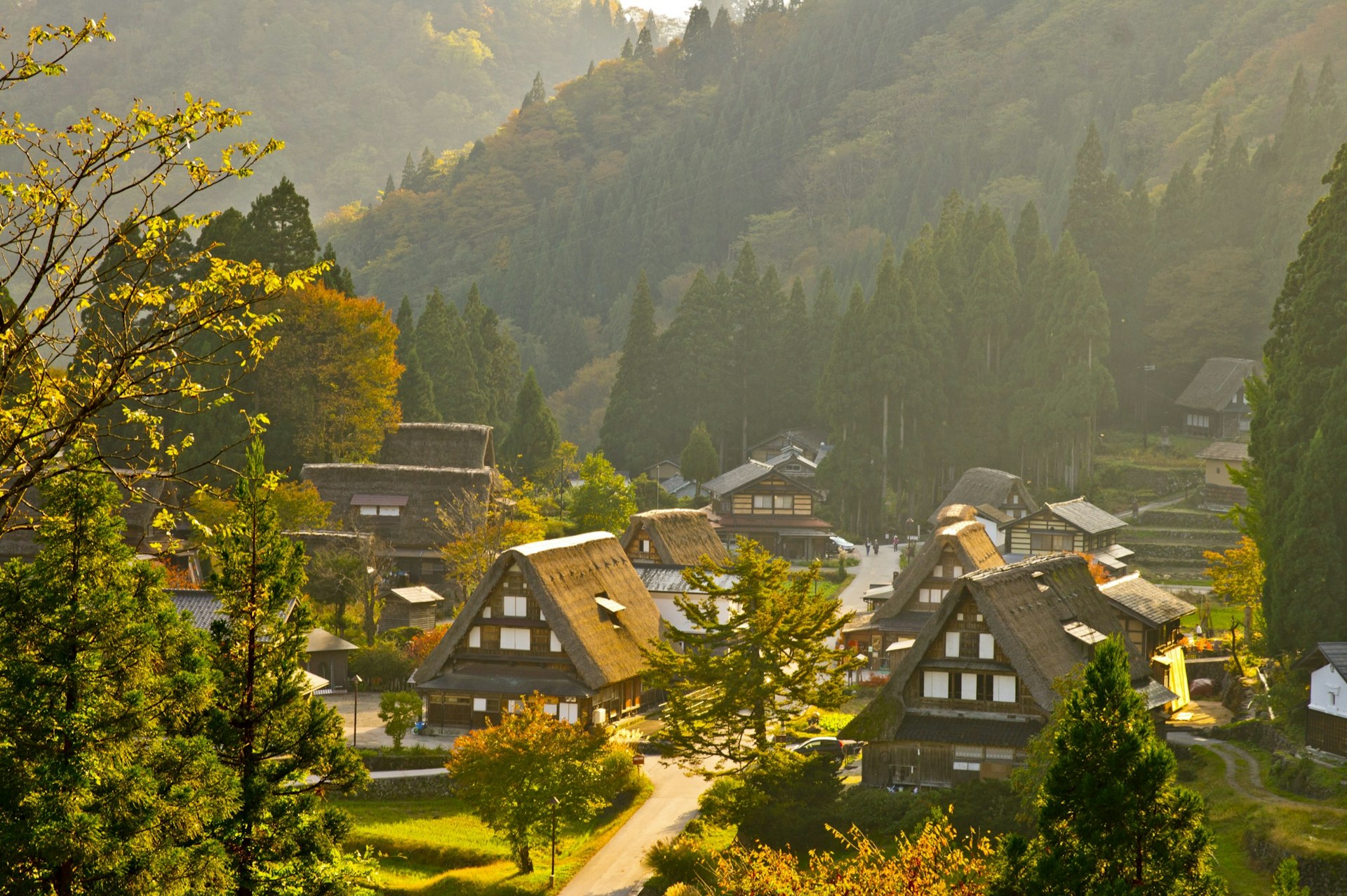
Toyama (Day 2)
Make your way to Takaoka City in the morning, one hour by bus from Inami. Here you’ll find Zuiryu-ji, a Zen temple built in honor of the deceased daimyo (feudal lord) Maeda Toshinaga in the mid-1600s. The main hall, surrounded by a pristine grass lawn, was constructed without nails. Instead, the architectural design uses a series of interlocking beams, which form a dramatic overhead matrix inside the building.
Next head to Amaharashi Beach, around 20 minutes away by train. Situated in a quasi-national park in the center of Toyama Bay, the beach offers scintillating views of Noto Peninsula crawling out to sea in the west and of mountainous Toyama rising skyward to the east. If you can get there first thing in the morning, Amaharashi Beach is also renowned as one of Japan’s best sunrise-watching locations.
From here, head to Nousaku, a metal-casting factory and workshop just outside Takaoka. At Nousaku, tin products are the specialty, which they export all across the globe. Make your own take-home tin sake cup here, take a factory tour, or purchase artisanal gifts from the store-cum-café.
Take a one-hour bus to Gokayama, a mountainous area protected by UNESCO for its 300-year-old gassho-zukuri buildings: thatched-roof houses shaped like praying hands (a style still lauded by modern architects).
Take a stroll around one of the two local villages to have gained World Heritage status in 1995, Suganuma and Ainokura, both of which are distinguished by their wholesome folktale airs, especially under snowfall in winter. In Ainokura you can stay the night in a minshuku (family-style guest house), such as thatched-roof Minshuku Goyomon. Other options include Yajibe, Nakaya, Choyomon, Yomoshiro and Yusuke.
Riding Japan’s ‘New Golden Route’: Traditional Niigata, Shiga and Saitama

Ishikawa (Day 3)
Ishikawa Prefecture borders Toyama, and your next destination is its flagship city Kanazawa. Kanazawa is also on the Hokuriku Shinkansen Line; just take a direct bus to Shin-Takaoka Station and hop aboard.
First, head to Higashi-chaya-gai, an old-world district of tea houses, geisha culture (traditional entertainers), and kinpaku (gold leaf) craft stores. Gold leaf production dates back 400 years in Kanazawa (the city's name translates to ‘Gold Marsh’); take a kinpaku painting workshop here or browse the stores selling everything from jewellery boxes to gold leaf ice cream.
Kanazawa is perfect for walking-enthusiasts; taking a 20-minute stroll over to Kenroku-en gardens is a great way to get a feel for the city. Constructed during the Edo Period (1603 – 1868), Kenroku-en is one of the three great landscape gardens of Japan. The circuit-style walking route frames a central pond, with a carefully curated selection of flowers and symbolic sculptures lining the paths.
You’ll also find the Ishikawa Prefectural Museum of Traditional Arts & Crafts within the park’s confines. If you have time, the partially-restored Kanazawa Castle grounds sit next door.
For a dinner that marries traditional cuisine with modern aesthetics, head to Coil, nestled in the heart of the city. This hip restaurant serves make-your-own maki sushi rolls (with keto and vegan options), and is accompanied by a tea bar serving a variety of local blends. For a hotel that reflects the spirit of its host city, consider Kanazawa’s funky Art Hotel Temarian.
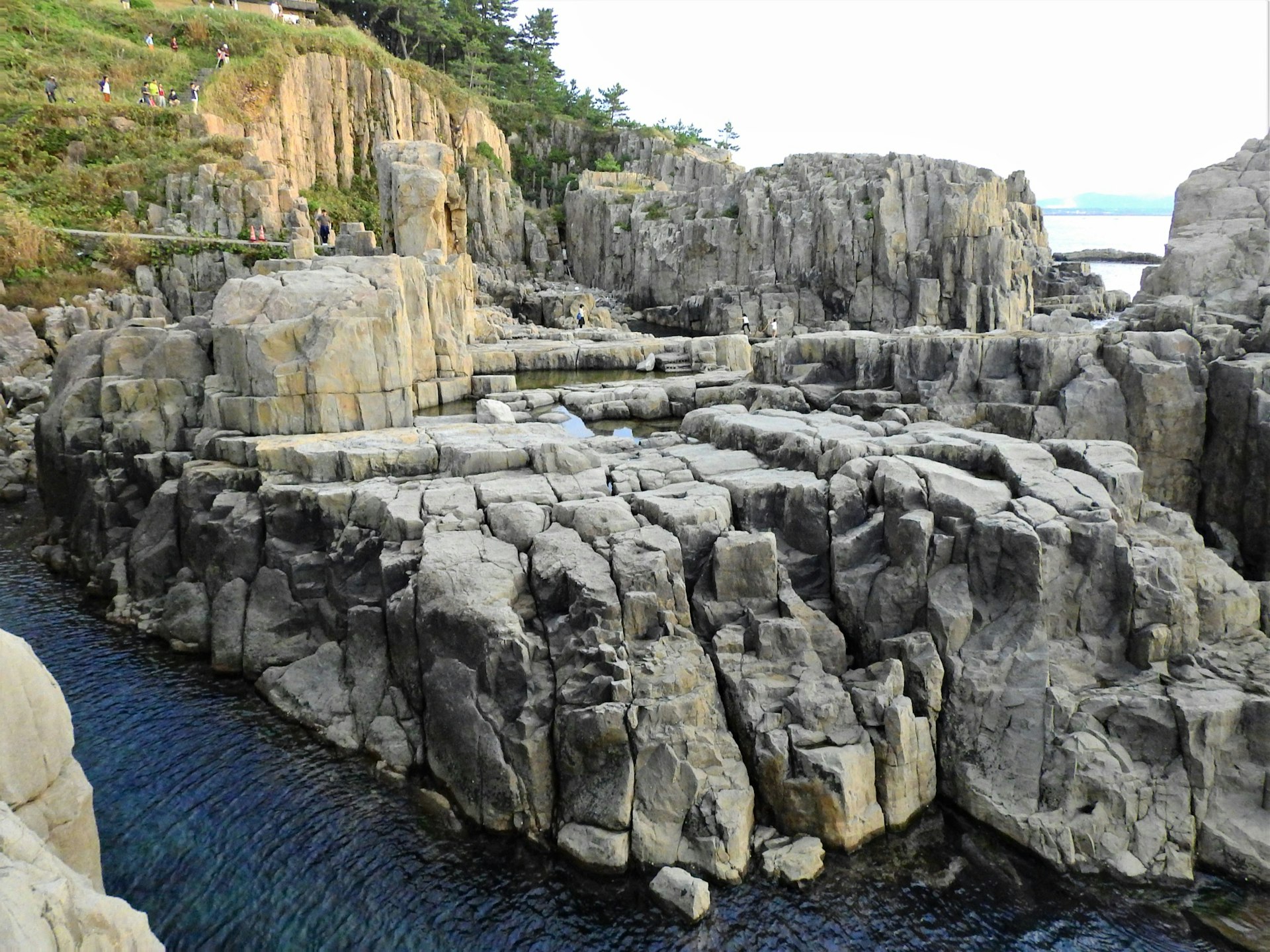
Ishikawa/Fukui (Day 4)
Before leaving Kanazawa, take a wander around Nagamachi, the one-time samurai quarter. Flanking the tight cobblestone streets are generations-old samurai houses whose former rank is dictated by the height of the exterior walls.
Nip into the Nomura-ke samurai residence for a peak at old artifacts, a tatami tea room, and a neat landscape garden. Another 25-minute stroll will bring you to Shijimaya Honpo, where you can admire sharp-as-ice samurai blades that have remained within the same lineage for hundreds of years.
Bid farewell to Kanazawa with a short train journey along the coast to Kaga Onsen, a collection of onsen (hot spring) resort towns, where you can take a relaxing dip following a couple days spent primarily on your feet. In one of these towns, Yamanaka Onsen, you can visit Kakusenkei Gorge, a fetching 4,000-feet-long riverside promenade carpeted in moss and shaded by huge cedar trees.
Before the day is out, take a train and bus journey (just over an hour) to Tojinbo in Fukui Prefecture. This unique mile-long stretch of hexagonal andesite cliffs greets the foamy breakers of the Sea of Japan; it’s one of the finest sunset spots in the country. Tojinbo is also less than an hour by bus from Echizen Mangetsu, a ryokan (traditional inn), complete with open-air onsen, where you can shack up for the night.
Riding Japan’s ‘New Golden Route’: Mountainous Gifu, Nagano and Gunma

Fukui (Day 5)
In Fukui Prefecture, washi paper, made from kozo (mulberry bush) fibers, is one of the most enduring crafts; you can see it in Japanese fans, sliding door screens, and more recently, in postcards. Echizen, a city located a couple of hours by train from the ryokan, has a long-standing washi paper heritage; it should be the focal point of your final day.
First up, check out the Echizen Washi Village area, where a 230-meter-long street connects the Paper & Craft Museum and the Papyrus House.
The Takefu Knife Village is also nearby, where smiths have been forging blades since the 14th century. Given that samurai tools of war aren’t as in-demand as they once were, production has shifted toward kitchen knives and gardening tools. For keen chefs however, one of these knives can make an unforgettable souvenir. Furthermore, you can try your hand at crafting a take-home miniature paper blade. (And if you happen to be in Echizen over New Year, you can watch blacksmiths carry out the ‘first forging’, an ancient rite asking the gods for an auspicious year ahead.)
On the other side of the city is Echizen Old Kiln Museum in the Echizen Pottery Village. Home to Echizen-yaki, the local one brand of pottery, and one of the six oldest kilns in Japan, you can admire the exhibitions displaying artisanal pottery displays, or craft your own wares in an Echizen-yaki workshop.
Your final destination, Fukui City, is 20 minutes away via the Hokuriku Line, or 50-minutes via the tramway from Echizen-Takefu Station. Time provided, you can take another historic stroll here through Yokokan Garden, a bucolic landscape garden home to the Matsudaira clan during the Edo Period, which is 10-minutes on foot from the Fukui Castle ruins.
Fukui has some affordable business hotel chains – APA and Dormy Inn – and provides easy access to Tokyo, Kyoto, Osaka and other major hubs by Shinkansen along the New Golden Route.
For more information on the New Golden Route, check out a downloadable brochure.

